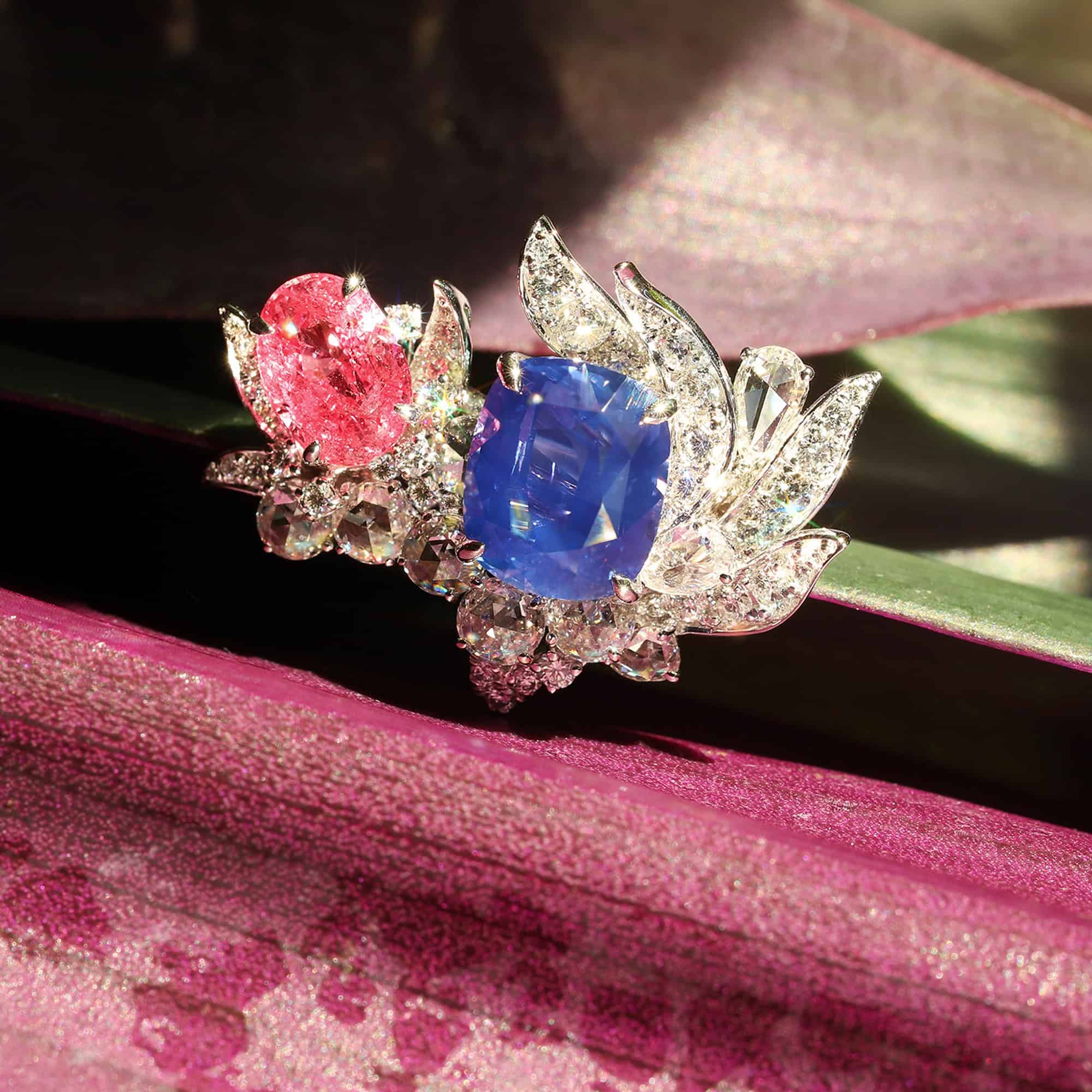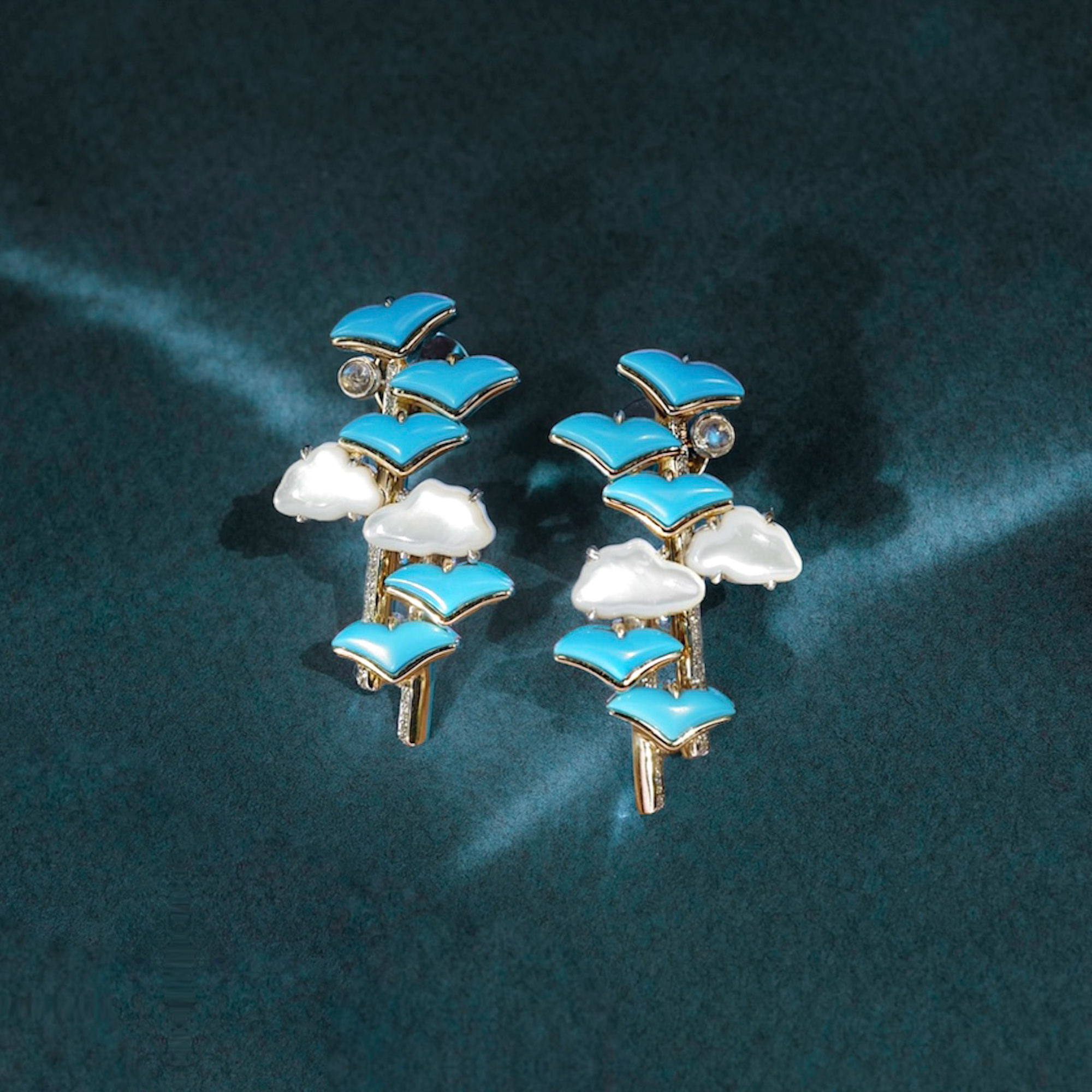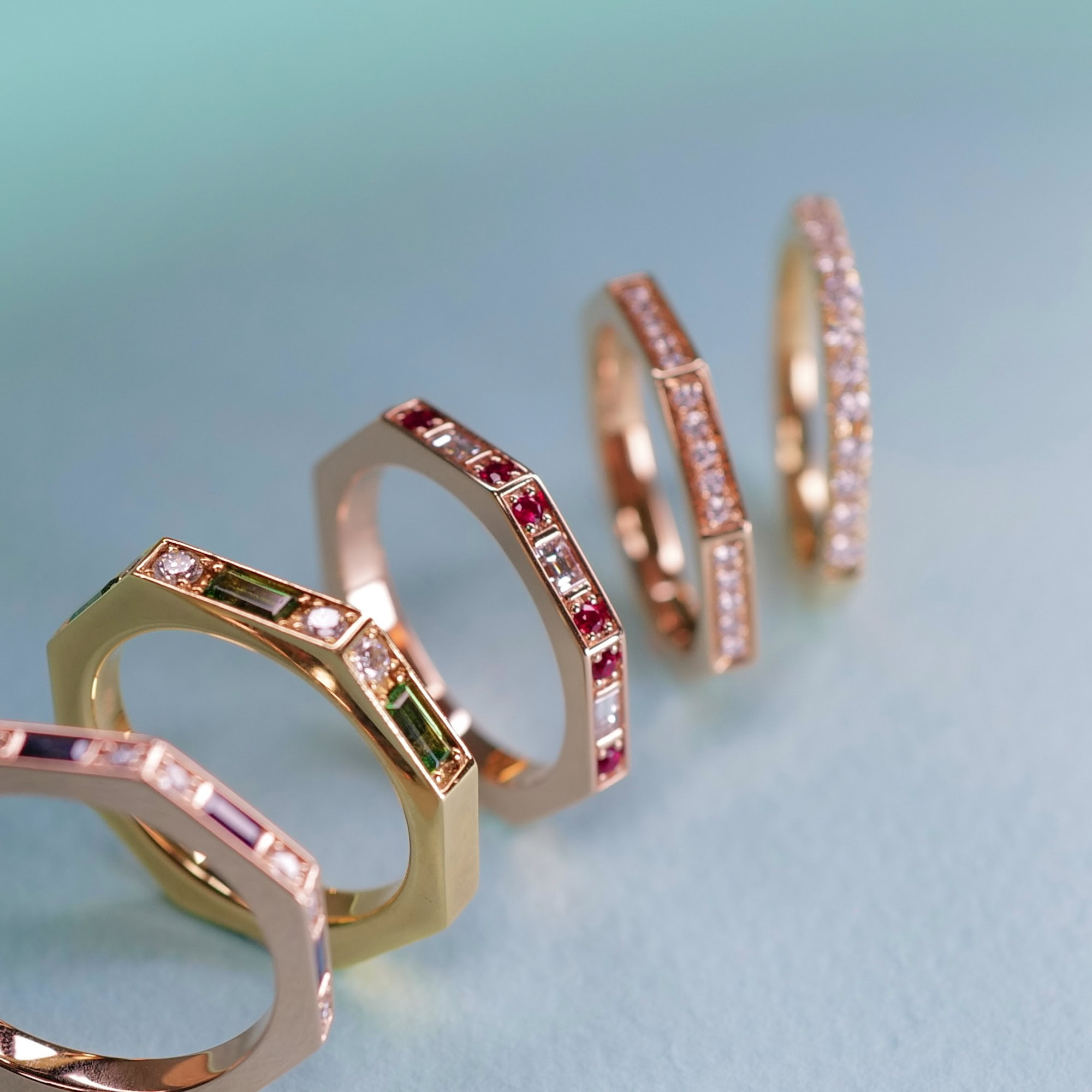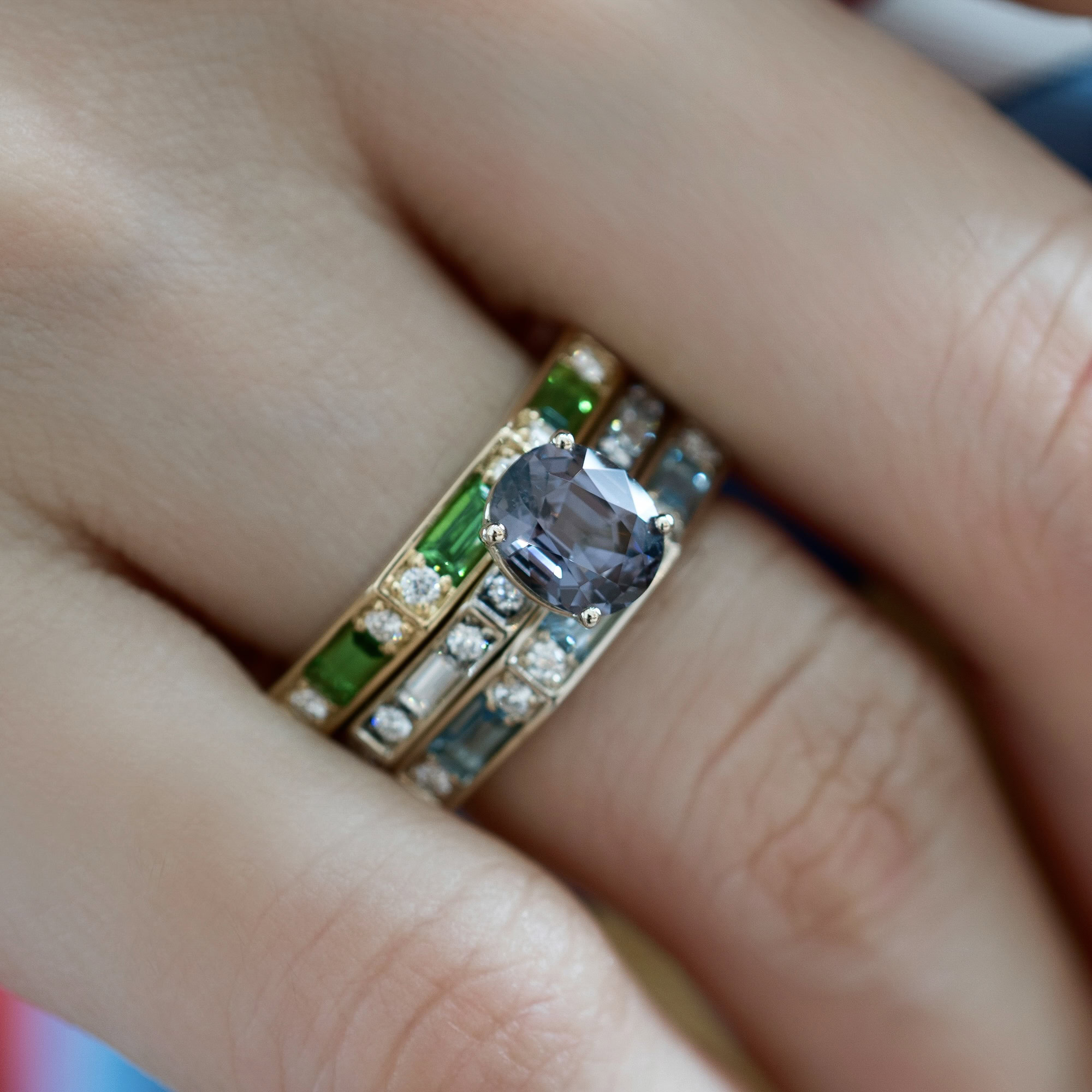Sapphires are one of our favourite gemstones here at Calla Lily. They’re fascinating, with various colours from purple to blue, teal, pink and yellow. We collect fine quality sapphires, which give our sapphire rings and earrings lovely colour saturation and wonderful lustre.
From their original discovery in ancient times to the Kashmir mines found in the 1700’s, Sapphires now come from Sri Lanka, Burma, Madagascar, Tanzania and the US and Australia, among other countries.
Aside from their beauty, they’re also durable. They rank 9 on the Moh’s scale of gemstone hardness. This makes them more resistant to scratches and good for daily-wear jewellery pieces such as rings and earrings. Only Diamonds are ranked higher, with a score of 10 out of 10.
Sapphires come from the mineral corundum, which contains aluminium and oxygen. Pure corundum is colourless, which gives rise to white sapphires. This is the reason why they can be a substitute for white diamonds. On the other hand, the beautiful colours of sapphires come from the presence of trace elements, such as iron and titanium that give rise to blue sapphires. The more iron, the darker the blue.
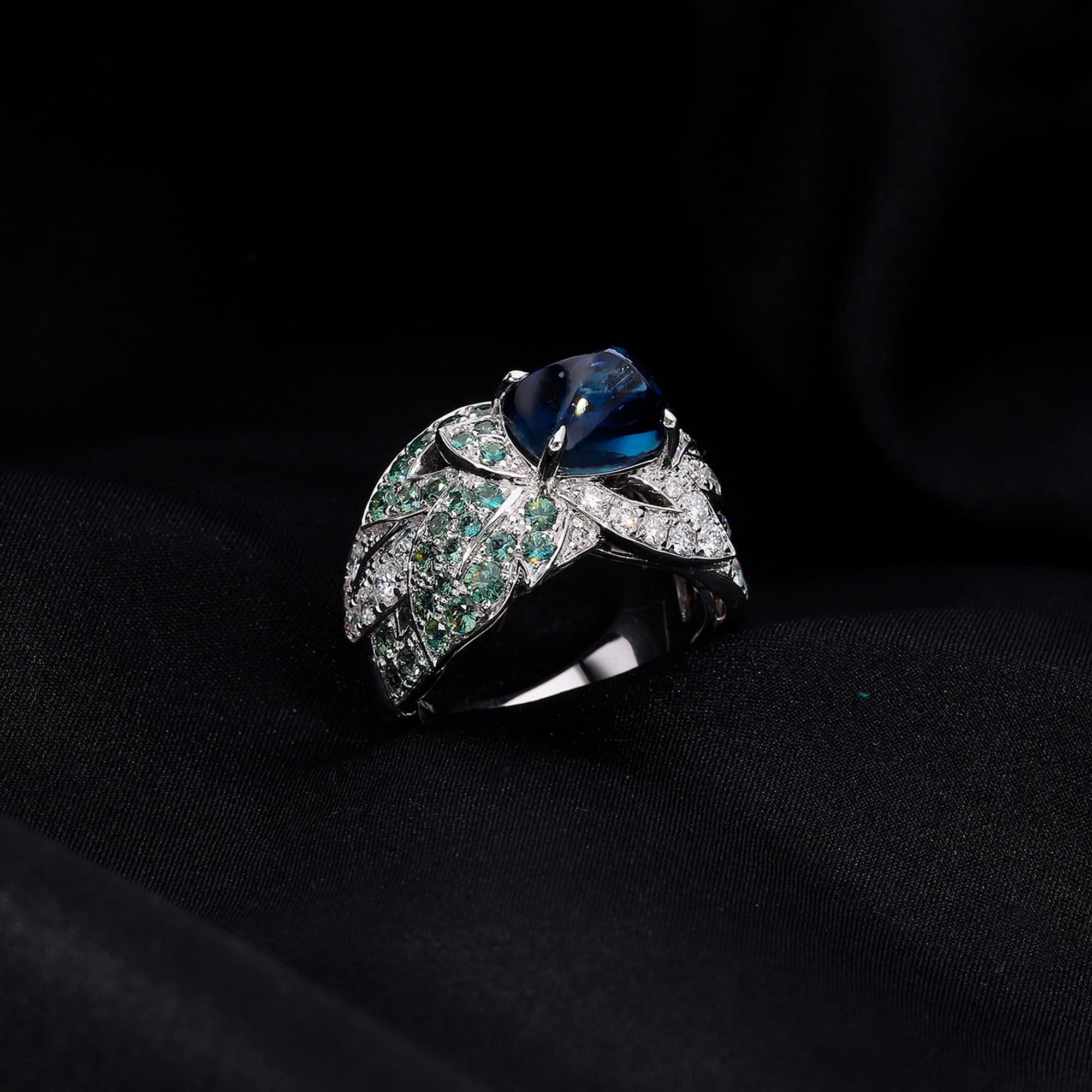
Typically when one thinks of sapphires, the most likely colour is blue, and if one doesn’t mention the colour, people assume it to be blue. The blues range from the sought-after ‘royal blue’, from medium-deep blue to strong-dark blue without any heat treatment. ‘Cornflower blue’ sapphires are named after the vivid pure blue of the flower. They come in more medium to light tones.
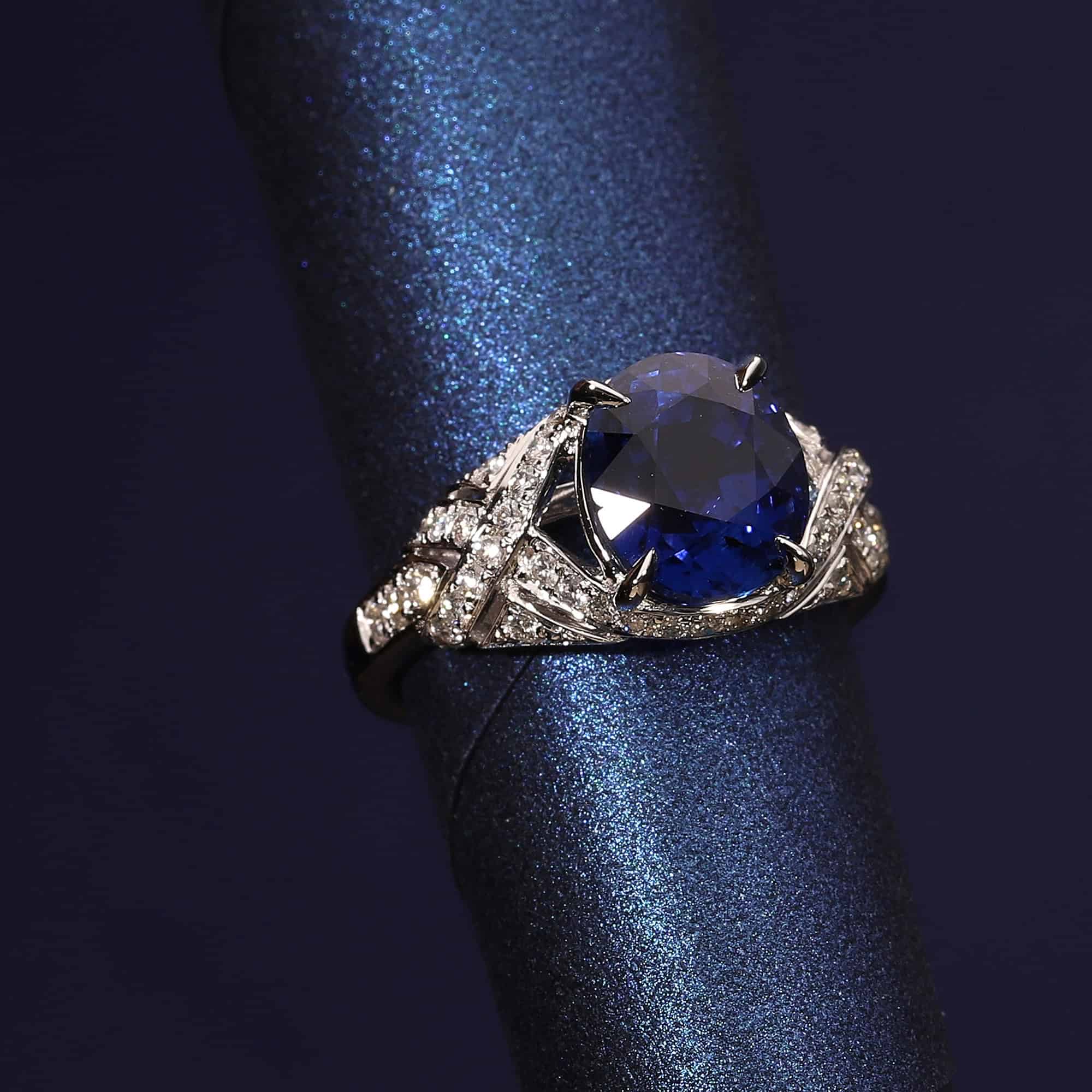
In terms of other colours, the orangy-pink ‘padparadscha’ sapphires are very beautiful and rare, especially in larger sizes. Their name means ‘lotus flower’ in the Sri Lankan language.
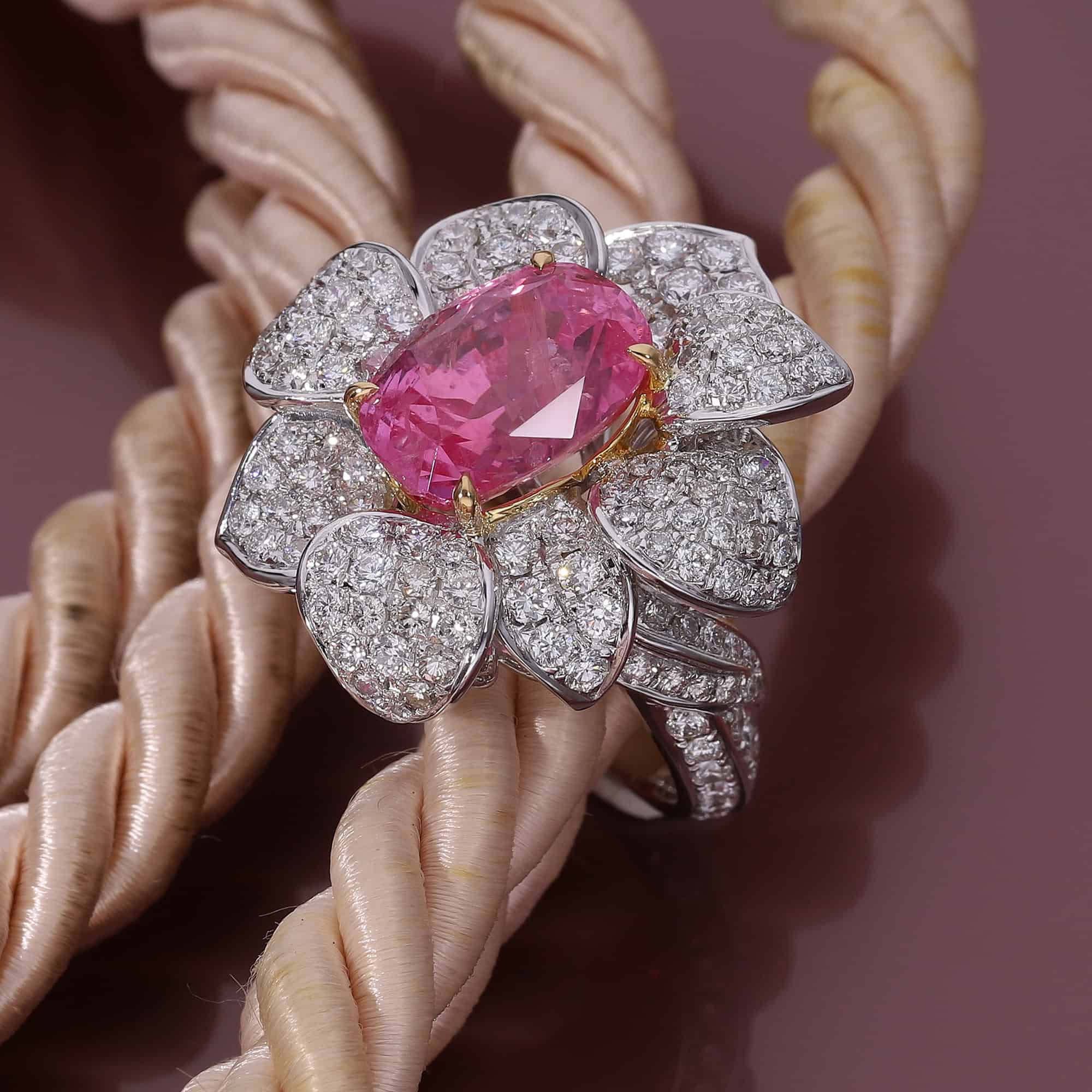
The trace element ‘chromium’ creates the pink sapphires and the red colour of sapphires known as ‘rubies’. Rubies come from the same mineral corundum as sapphires but are called rubies solely due to their red colour.
Sapphire Engagement Rings
Since Prince Charles proposed to Princess Diana with a 12-carat royal blue sapphire engagement ring in 1981, sapphires grew in their appeal for coloured gemstone engagement rings.
It was further emphasised when Prince William, who inherited the ring from his late mother, proposed to Kate Middleton with the ring in 2010.
As engagement rings, Teal sapphires have become very desirable in recent years. Their romantic blend of deep ocean blue and luscious green colours signify the infinity of the sea and the sky. The name ‘teal’ to represent this colour comes from the teal duck with a teal-coloured stripe running from its eyes down to its neck.
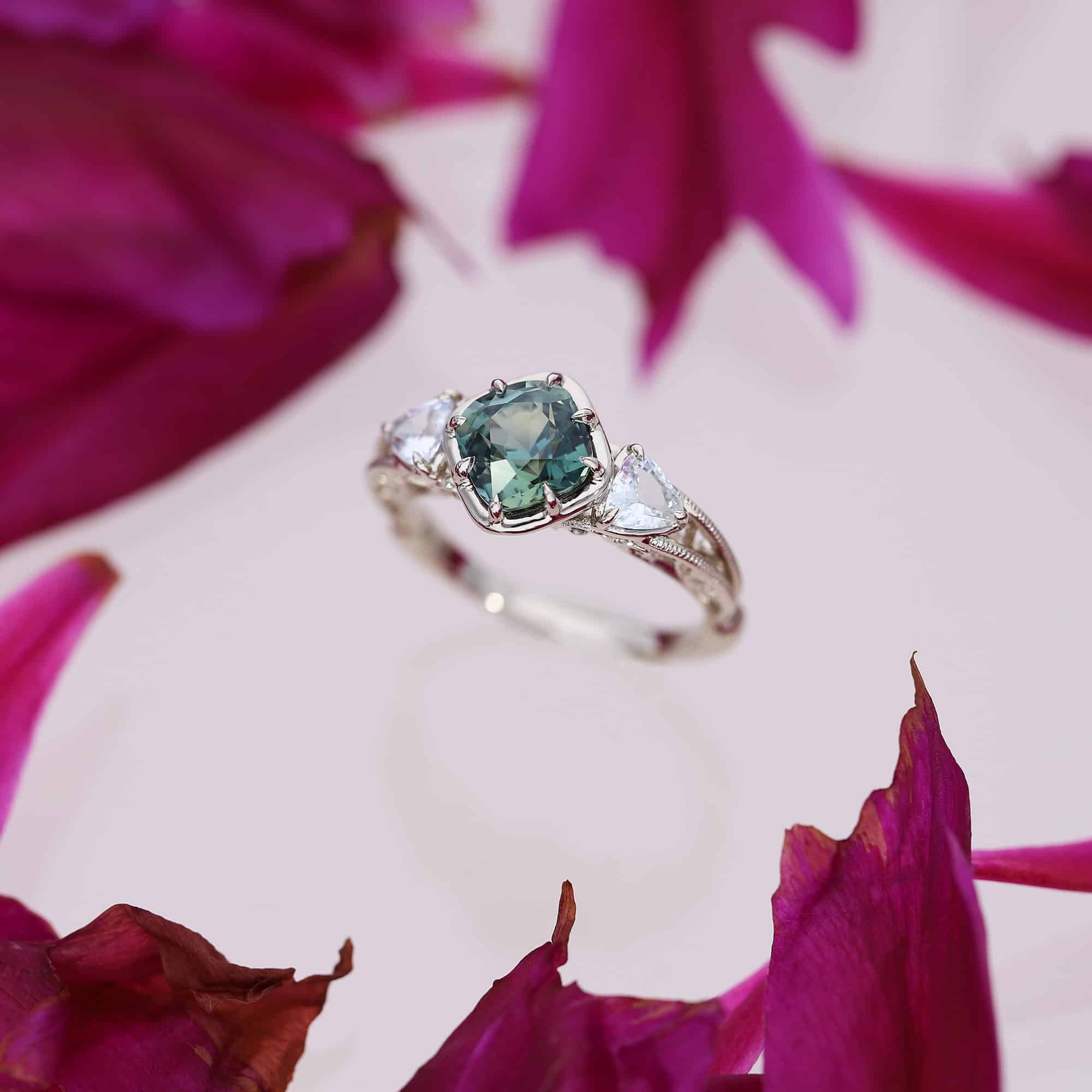
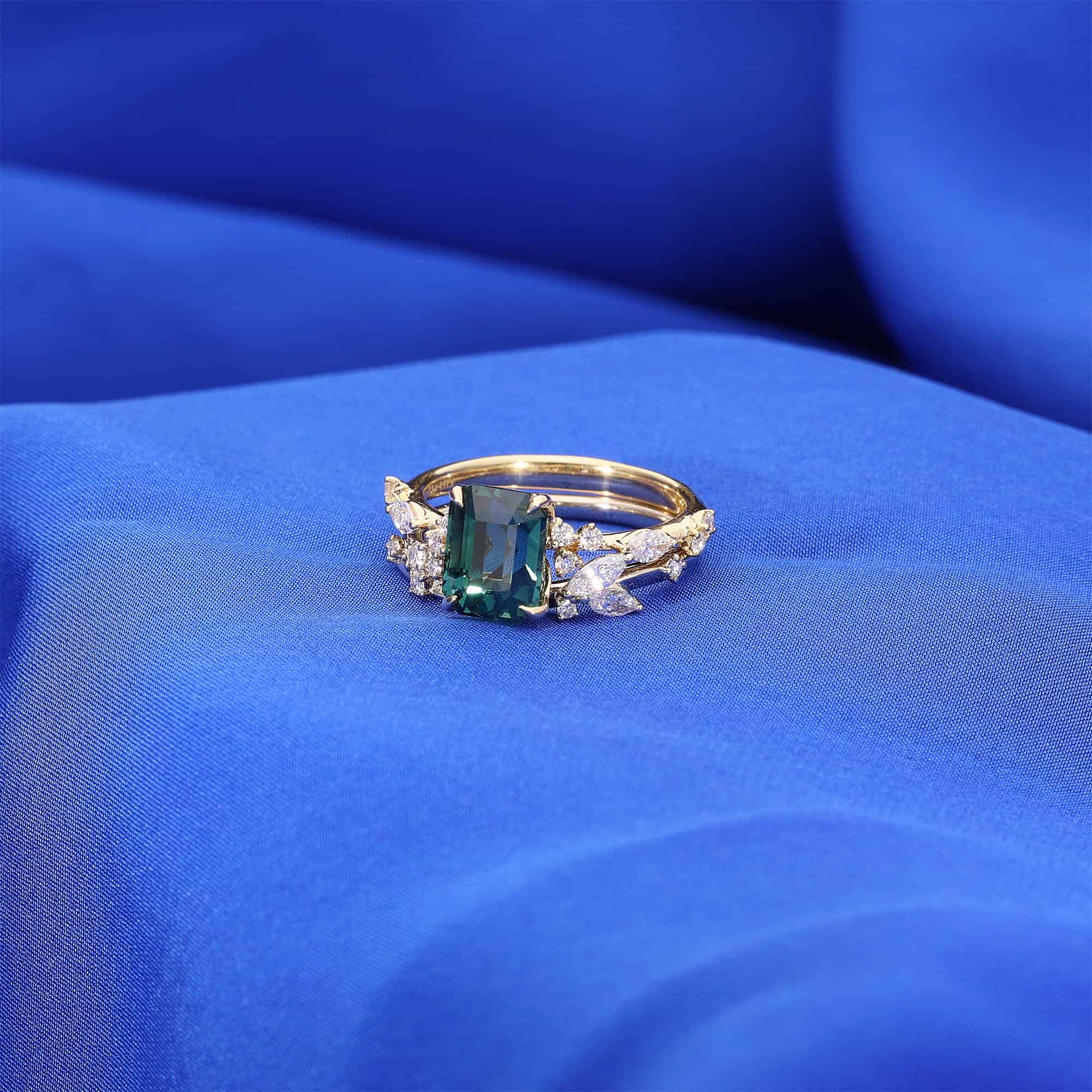
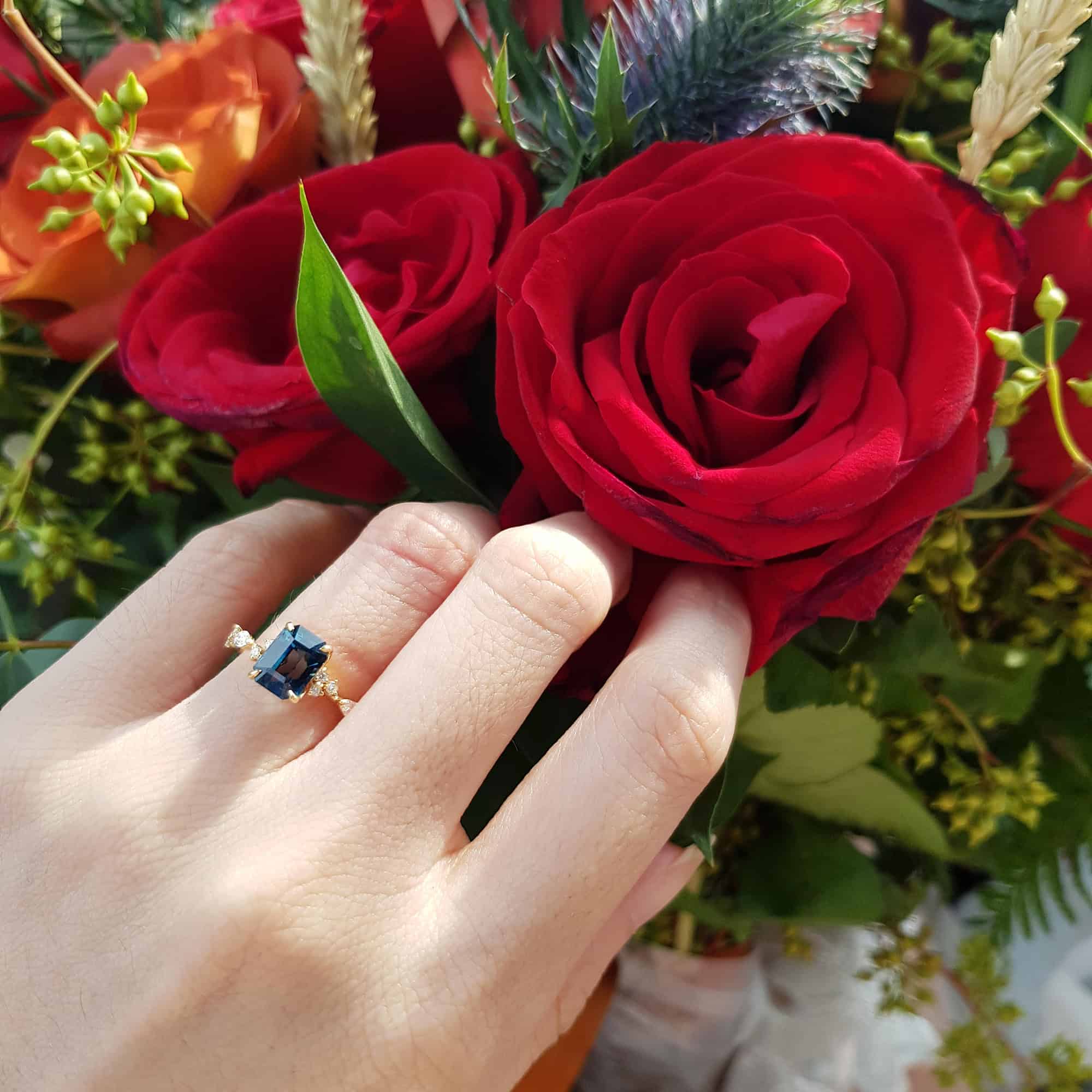
Star Sapphires (asterism)
In some sapphires, parallel needle-like inclusions that form as part of the natural crystal growth reflect light to create sheen-like bands across the dome and produce a star-effect called asterism, which in astronomy means ‘a pattern of stars’. Fine star Sapphires are very rare, especially with a well-defined and centred star against a luminous and translucent gem.
Video of a bespoke 18k black sapphire ring
Black Star Sapphire Ring with violet tanzanite, mint tourmaline, paraibas, and arrow-cut diamonds. Made specially for our client.
Colour-change Sapphires
Some sapphires have a unique colour-change feature, usually from blue in fluorescent white light to purple in incandescent yellow light. Others exhibit a starker change from greyish or greenish-blue to brownish-red. The greater the colour change, the rarer and more valuable the gem. It gives the jewel a dynamic feel as the colour is forever changing as the wearer moves amid different light settings. Truly beautiful.
Video of our bespoke made “Sapphire Flowers in the Wind Ring”
A rare and collectable pair of unheated sapphires sway upon windy leaves of rose-cut diamonds. 18k white gold ring with a colour-change sapphire (cushion, 4.67cts) paired with a padparadscha sapphire (oval, 2.14cts) – both unheated, surrounded by rose and brilliant-cut diamonds. The colour-change sapphire changes from a saturated blue under white light to a light purple under yellow light.
Parti-colour Sapphires
The word “parti” means “partition”. There are sapphires where a trace element was exhausted mid-way through the formation of the crystal. So the crystal continued to form with a different colour – a very special natural phenomenon. The usual bi-colour combination is yellow and green, but there are rarer blues, purples and even tri-colour combinations.
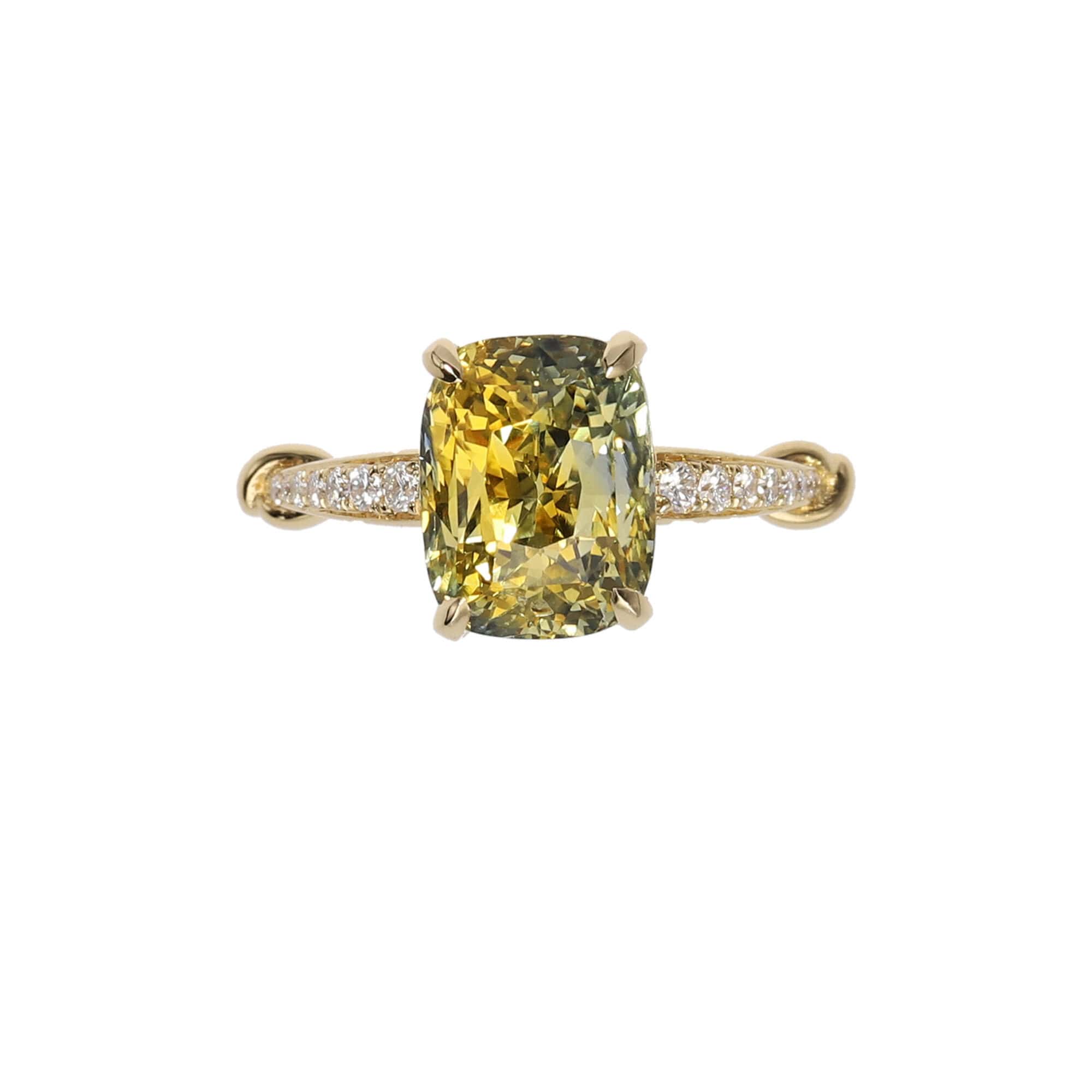
Heat or no-heat treatment
Sapphires are commonly heat-treated to enhance the saturation of colour and to remove some inclusions. A gemology laboratory can help identify whether the gem has undergone heat treatment or not. It affects the value significantly as beautiful sapphires without any treatment are rarer and therefore more valuable.
However, if you’re not particular about treated gems, the heated sapphires are still very desirable stones. The heat treatment is permanent, so you don’t need to worry about durability issues, the colour fading, or the gem’s clarity changing over time. The heated sapphires should stay as they are.
Getting a gemstone certification is also a good idea. This is to ensure that your sapphire is natural and not man-made, as synthetic sapphires are becoming more common. The lab can also check for other types of colour enhancement using chemicals. Natural sapphires will have natural imperfections and inclusions, which can help identify it’s not lab-grown.
How much do sapphires cost?
Sapphires are usually less expensive than diamonds. Color, clarity, cut, carat weight, and heat treatment can all affect the price of a sapphire. A good quality sapphire around 1 carat could be roughly between SGD2,000 to SGD3,000. In contrast, the price per carat rises for larger stones as the rarity increases. So, a 5-carat stone could be between SGD25,000 to SGD50,000 depending on the quality. With coloured gemstones, it’s very difficult to give price ranges as it all depends on the colour and quality of each unique gem.
In comparison, a 1-carat natural diamond of good quality could be about SGD15,000, and a 5-carat diamond could be SGD100,000 to SGD500,000 depending on the quality. However, the irony is that coloured stones are often much rarer and harder to find if you’re looking for a specific colour, size and shape, compared to white diamonds.
If you consider the price comparison of fancy-coloured sapphires to diamonds the price difference is astronomical. A nice 3-carat pink sapphire could be about SGD15,000 but a pink diamond of the same colour could be SGD1 million or higher!
Despite the lower prices of sapphires versus diamonds, they can be very sparkly too, if cut well combined with high crystal clarity. This together with the beautiful colours they come in, makes sapphires a great choice for personalised and unique engagement rings!

